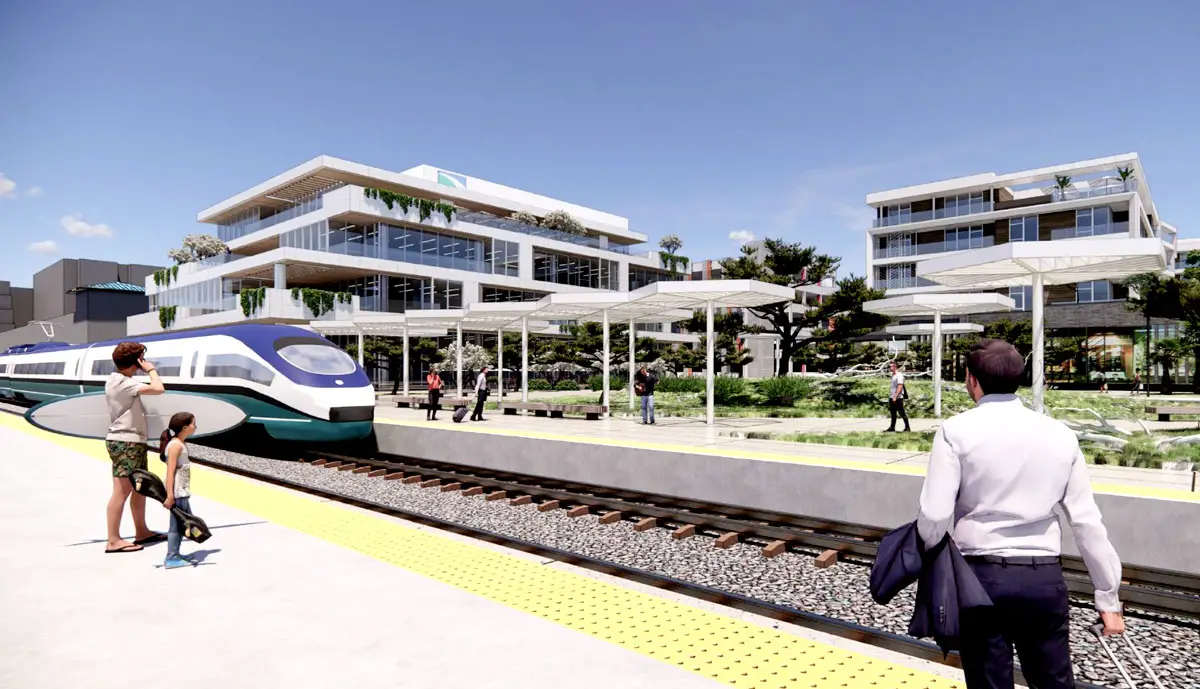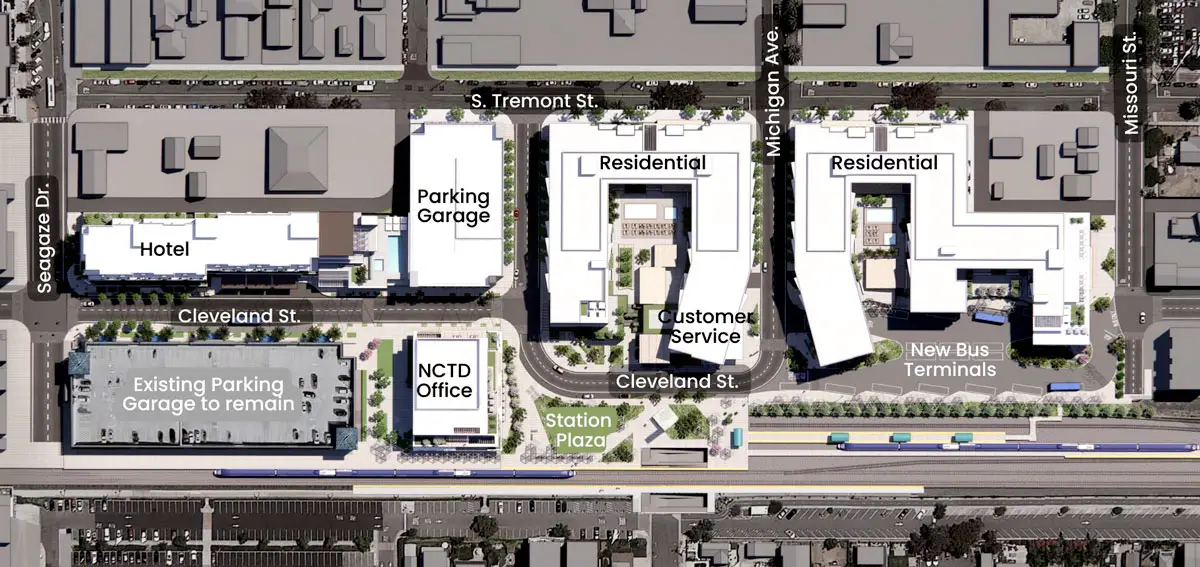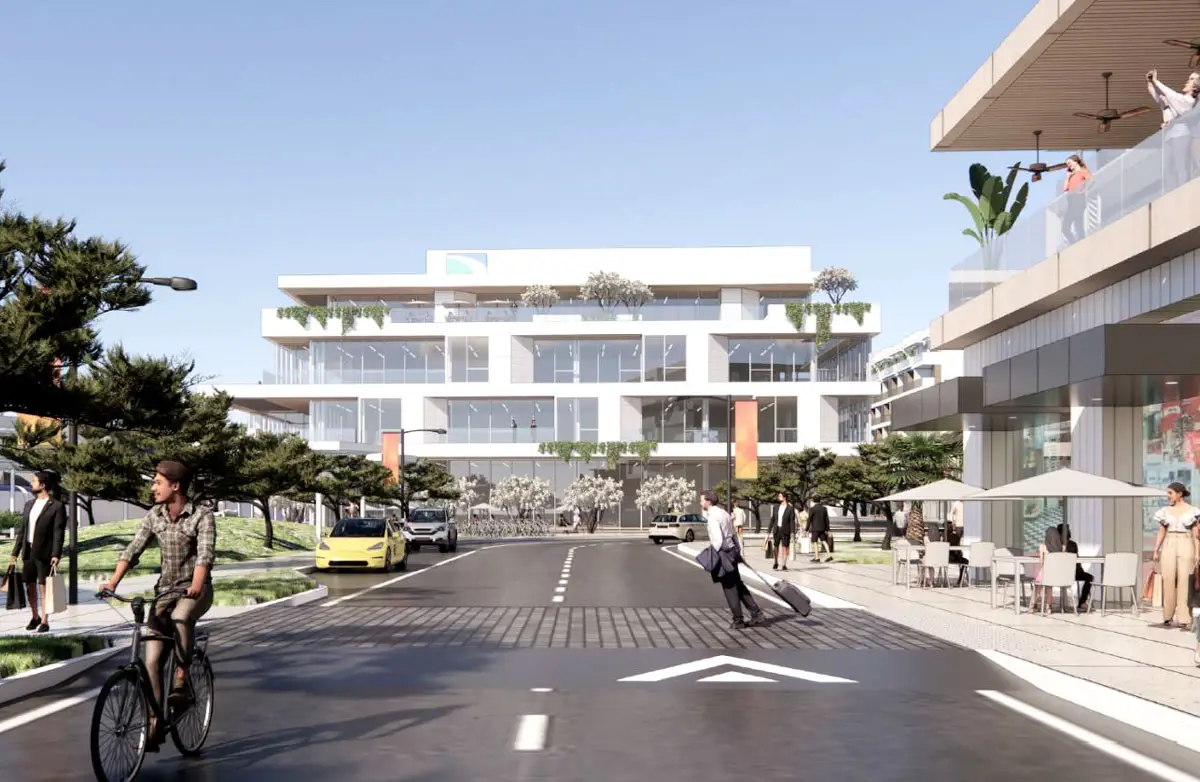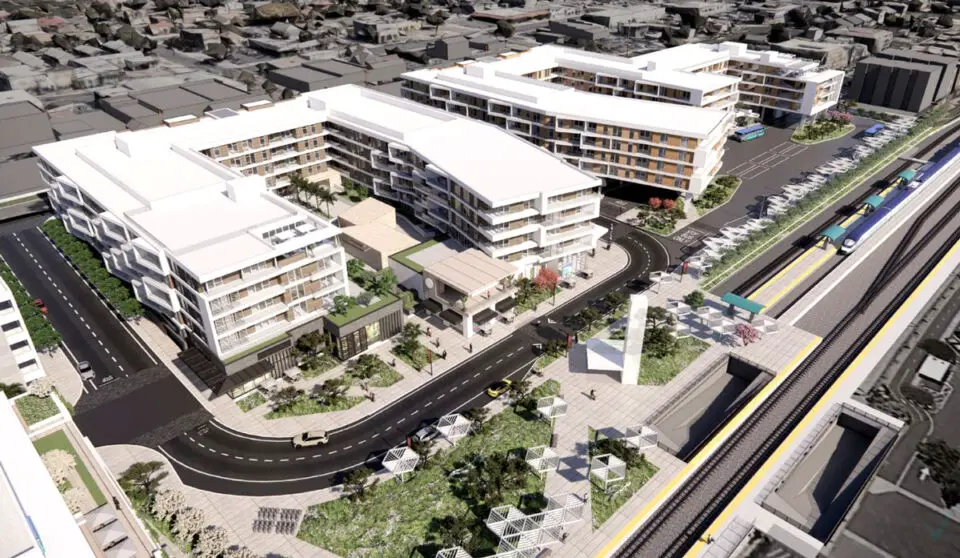OCEANSIDE — As plans for the redevelopment of the Oceanside Transit Center edge closer to completion, neighboring residents remain concerned about the impacts a proposed relocation of the bus bays could have on the local neighborhood.
Plans to redevelop the transit center have been underway since 2016 when the North County Transit District board of directors adopted a policy to develop some of its real estate holdings, including the transit center, to reduce vehicle reliance and increase transit ridership while creating jobs and affordable housing.
NCTD hired Toll Brothers Apartment Living to develop a mixed-use project on-site with up to 547 apartments, 165 luxury hotel rooms, office space, retail stores and three parking garages for 1,800 parking spaces. The regional agency also plans to relocate its current headquarters to the transit center and replace the 810 Mission Avenue space with 206 mixed-income apartments, including 15% designated for low-income households.
Preliminary environmental documents were submitted to the Oceanside Planning Division over the summer for the mixed-use housing, hotel, offices and retail shops to be built at the transit center.

Currently, buses use Seagaze Drive as the main exit. Still, the proposed redevelopment plans would relocate the bus bay to the property’s southwest corner and redirect southbound buses to use Michigan Avenue and Missouri Avenue instead. At the same time, north and eastbound busses continue to use Seagaze.
While most residents who live near the transit center support the project in general, several are concerned about the redirection of bus travel along Michigan and Missouri avenues.
Kevin Ham, who helped create Innovate78, and Jane Marshall of the Oceanside Coastal Neighborhood Association feel that Seagaze is better equipped to handle bus traffic because of how wide the road is compared to the narrow roadways of Michigan and Missouri.
Chris Orlando, NCTD chief planning and communications officer, said relocating the bus bays will create a more efficient travel experience for riders with more convenient connections between the bus and rail systems.

“It is currently a 7- to 10-minute walk to transfer between bus and rail services,” Orlando said via email. “Relocating the bus bays and the rail platforms reduces the walking distance and cuts the time it takes to transfer between modes to two to five minutes, making it more convenient for riders and a better transit experience overall.”
Ham and Marshall remain skeptical of the move, which they said was proposed without the proper levels of community input.
“Unfortunately, this project failed to conduct early and important community meetings for input on concerns that negatively affect the surrounding community, such as the bus bay relocation to the southwest corner of the southern lot and resulting ingress and egress impacts of all southbound buses on Michigan and Missouri Avenues,” Ham said.
Developers are currently awaiting the completion of a circulation study reviewing the current plan to determine the optimal paths for buses entering and exiting the transit center. Orlando said the study is expected to be completed this fall.
Orlando said the circulation study is considering the Coast Highway Corridor Study, a separate plan the city is working on to redevelop its stretch of Coast Highway.
“NCTD and the developer are working closely with the city on the circulation elements of the project, including anticipating potential road features in the Coast Highway Corridor Study,” Orlando said. “NCTD has provided the city with bus operational requirements to ensure any future road projects, including roundabouts, are compatible with bus operations.”

The corridor study proposes installing several roundabouts, including one at the intersection of Coast Highway and Michigan Avenue. Marshall questioned if the buses can logistically use Michigan with such a change, though Orlando noted that NCTD buses operate in other areas with roundabouts.
Although Marshall and Ham both support the transit center’s redevelopment, they feel that developers could better listen to community input about the project than they have so far.
“We’re trying to have an open dialogue, but these things seem to change very discreetly,” Marshall said, referring to some modifications made over the last year to the initially submitted redevelopment proposal.
Some of those changes include creating an exit on Missouri. Initially, the exit didn’t exist, according to Ham, then was added as an emergency exit before it became the only exit for southbound buses.
“This makes us wonder what else has changed slowly without detection,” Ham said.
Ham and Marshall want to remove the Missouri exit for southbound buses and instead use Seagaze as they currently do.




